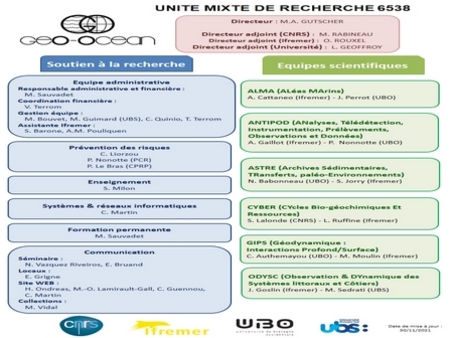The story of a rock
To understand seabed rocks, we need to identify their chemical and mineral composition.
To this end, we recover samples using two methods:
- Our manned submersible, the Nautile, has a robotized claw with which we choose the rocks to be sampled. More rarely, some rocks simply find their way into the sample basket without being chosen! (eg. during dive no 2).
- The rock dredger, a large net with clamps, is dragged along the bottom, collecting rocks over several hundreds of metres in a single operation.
In both cases, samples are then brought back on-board and sorted. The most interesting are sliced and photographed to preserve a trace of their initial state. Each rock is then identified and classified according to its shape, texture, colour and visible minerals, either with the naked eye or through the binocular microscope.
We complete their identification with chemical and mineral analyses by reducing the samples into fine powder according to the following procedure:
Step 1 :
the rock is sawn into cubes of less than 1 cm
Step 2 :
the cubes are dried overnight in an oven at 60°C
Step 3 :
the cubes are broken down with an Albich mortar and hammer
Step 4 :
the crushed rock is placed in a grinder to be reduced to a fine powder
We then proceed with mineral analyses by x-ray diffraction.
For the last step of chemical analysis: 6g of rock powder are mixed with 0.6g of wax before being compacted with a hydraulic press applying a force of 10 tons. The pastel obtained is analysed by fluorescence x which will provide the chemical composition of the sample.

